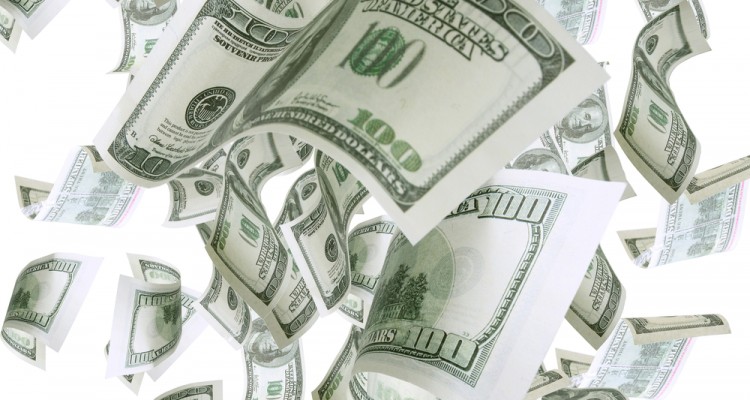
Thanks in part to Mexico’s economic malaise, almost a quarter of its labor force is now employed in the U.S. While annual real GDP growth was solid during the 1996-2000 period, ranging from a low of 3.6% to a high of 6.8%, it slumped to -0.2% and 0.9% in 2001 and 2002, respectively, and is expected to be only 3% this year. For a developing economy this is gross under-performance. But what few recognize is that a key culprit in the matter is monetary policy.
Following the 1994-95 Mexican peso crisis the Banco de Mexico made major changes to monetary policy. Rather than pegging the peso’s rate to the dollar, as it had prior to the crisis, it began targeting annual inflation.
The general results have been good. Consumer price inflation has come down to a tame 5% from 34.4% per year in 1996, and interest rates on 28-day Cetes — or treasury bills — have fallen to less than 5% from 31.4% on average in 1996. Mexican government bonds are now rated investment-grade by the three largest credit rating agencies. The peso has held its own in the foreign-exchange market over the same time period, depreciating to around 10.3 against the dollar from 7.86. Yet, as mentioned, in recent years economic growth has been anemic.
The trouble stems from the central bank’s desire to maintain control of base money growth. To meet that aim it has to “sterilize” dollar inflows. That is, as dollars come into the country and the bank issues new pesos in exchange, it simultaneously issues debt to soak up the peso liquidity. Thus, dollars build up at the central bank but a flood of new pesos in circulation is avoided, and the peso’s exchange rate is managed. Even though base money has increased to $23.43 billion today from the equivalent of $10.63 billion in 1996, net foreign reserves have increased dramatically to $53.7 billion from $149 million in 1996.
These operations, however, are not costless. The interest earned on foreign reserve holdings is less than the interest the bank must pay on the bonds it issues. Sterilization also causes interest rates to rise above where they would otherwise be because the public’s willingness to finance the government declines.
The Banco de Mexico has been issuing its own bonds known by the Spanish initials BREMS since August 2000. Coupons on the bonds are about 6% per year. Issues have ballooned to nearly 235 billion pesos, an amount that nearly equals the 241 billion peso stock of base money, and roughly 40% of foreign reserves. The net effect of the reserve accumulation has been to impose losses on the central bank. Simply put, the cash flows generated by the Banco de Mexico’s assets are less than those created by its liabilities.
Central bank bond issues have also crowded out private sector credit, pushed up lending rates and acted as a drag on the economy. Since the central bank started issuing BREMS, outstanding private sector credit has declined by 6.9%. And not surprisingly, outstanding credit issued by the private banks to the public sector has increased by 34.2%. This crowding-out effect explains why average annual lending rates have swelled to 11.4%.
Central Bank Governor Guillermo Ortiz knows the limits of sterilization and has implemented a new policy to reduce the rate at which the central bank accumulates foreign reserves. Effective May 2, the central bank began to assess its quarterly accumulation of foreign reserves. Half of the reserves accumulated in a quarter will be auctioned to domestic credit institutions in equal amounts spread over the business days of the following quarter.
This new mechanism won’t reverse the problems created by foreign reserve accumulation — namely, the costly interest-rate spread and the crowding out of private financing. It is true that it will slow down the process. Yet the consequences of sterilization will remain. Real interest rates will be higher, and inflation lower, than if they were allowed to respond to international capital flows. Higher rates mean slower growth. Mexico has already missed its modest first-quarter growth target of an annualized 2.7%.
The real problem is the Banco de Mexico’s attempts to regulate base money in the face of foreign-reserve flows that clearly overpower its domestic monetary policy instruments (hence the need to issue BREMS). As long as Mexico maintains an inflation-targeting central bank and is unwilling to let the exchange rate float freely, it will face a trade-off. It can continue to prevent capital inflows from affecting base money, thereby controlling inflation but tightening credit to the private sector. Or it can let base money be driven by changes in foreign reserves — risking somewhat higher inflation — allowing credit to expand and fuel growth-generating investment.
Even in the face of a good performance since 1996, the peso is failing to meet the market test. Mexicans prefer greenbacks. In consequence, the peso is rapidly losing market share. The Mexican economy continues to spontaneously dollarize and become more unified with the dollar zone. Since 1996, remittances of dollars have totaled $51.6 billion, while the dollar value of the peso supply has only increased by $12.8 billion.
With the peso’s importance shrinking, it’s time for Mexico to officially dollarize. By using $23.5 billion of its foreign exchange war chest, it could retire the peso. That would leave $30.2 billion in foreign reserves that would no longer be needed as a signaling device to scare away currency speculators and keep the rating agencies happy. While retaining a cushion of foreign reserves for transaction purposes, Mexico would still have reserves to spare. It could use them to buy back some of its $81.1 billion foreign debt and reduce the fiscal costs of reserve retention. Such a dollarization package would give Mexicans what they want (the dollar). It would eliminate the fiscal costs and high interest rates associated with sterilization, and further boost Mexico’s creditworthiness — and, yes, growth.
Author Steve H. Hanke

0 responses on "It’s Time for Mexico to Dollarize"